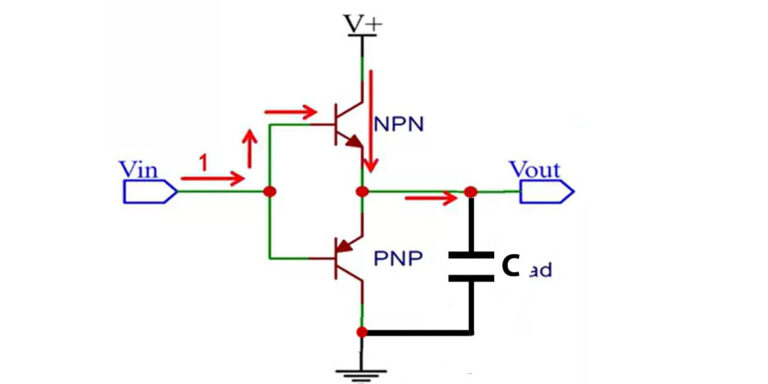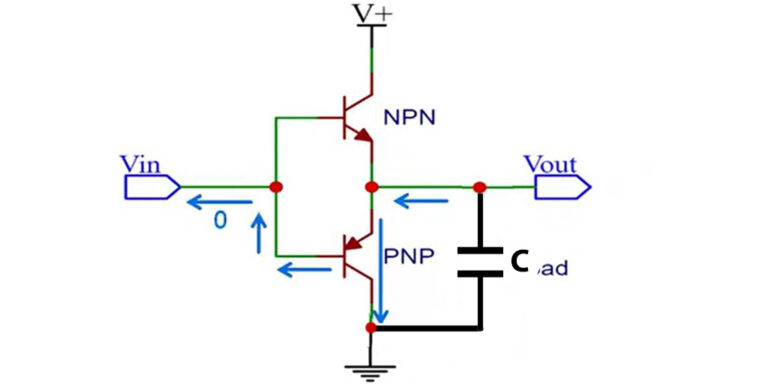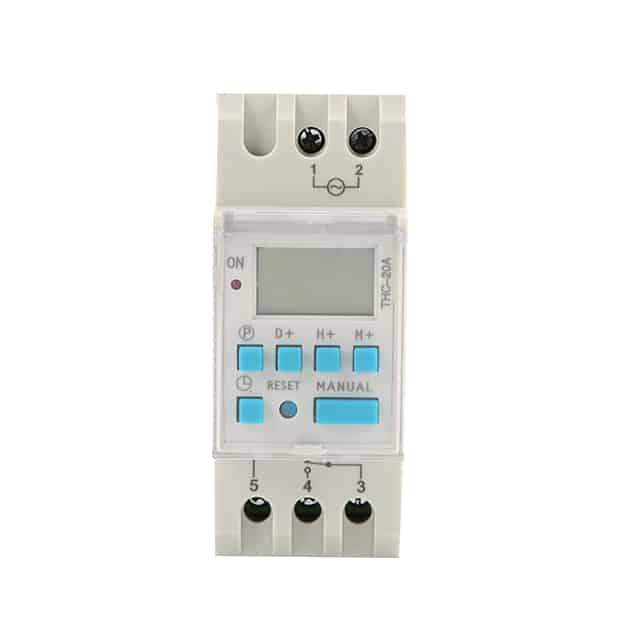Push-pull output(also called Totem pole output) is a common circuit found in electronic equipment such as inremental rotary encoders, MCU, and so on. It can effectively control the flow of current and provide two stable output states of high level and low level. In this article, we will introduce what push-pull output is and the characteristics of it.
What is push-pull output?
A push-pull output is a circuit allowing you selecting sink or source current from a connected load, it usually consists of an NPN transistor and a PNP transistor (or two complementary MOSFETs). Please see its circuit diagram below:

When the input signal is high level(generally named “1”), the NPN transistor will be turned on, the PNP transistor will be turned off. Thus, it will generate a high level(1). This is simply called “Push“, please see its electric current flow diagram below:

When the input signal is low level(0), the NPN transistor will be open, the PNP transistor will be closed. Therefore, it will generate a low level(0). This is simply called “Pull“, please see the current flow in the below picture:

This structure enables the push-pull output to provide both high-level output and low-level output.

Characteristics of push-pull output
- High output current capability: As we all know, in an incremental rotary encoder, if there are no other external circuits, its output current will be very small. By using the push-pull circuits, the output current can be as high as 30mA, so it can be used to drive various loads, such as motors, relays and solenoid valves.
- Low power consumption: The push-pull output requires only a small operating current in the static state, which helps save energy and reduce power consumption.
- Direct connection to power and ground: The push-pull output can be directly connected to power and ground without external pull-up or pull-down resistors, simplifying circuit design.
- Stable output voltage: Push-pull output ensures stable high-level and low-level output voltage, which is crucial for reliable signal amplification and transmission. As the output voltage is provided by external source, it will not be affected by internal interference, thus, the output voltage is more stable.
- Bidirectional control: As mentioned earlier, the push-pull output can not only handle low-level input signals but also high-level signals, so it can better handle bidirectional signals.
- Enhanced anti-interference ability: Push-pull output helps to enhance anti-interference ability. Even if external interference affects the input high level or low level, as long as the input is within the high and low level range, the output terminal will not change accordingly.
Conclusion
In conclusion, push-pull output is a commonly used circuit output mode that combines NPN and PNP transistors (or MOSFET) to provide stable high-level and low-level outputs. It offers high output current capability, low power consumption, and the ability to directly connect to power supply and ground without external resistors. The stable output voltage of push-pull output ensures reliable signal amplification and transmission. With its versatile characteristics, push-pull output is widely applied in digital circuits, microcontrollers, and other electronic equipment, enabling efficient signal control and driving various loads.






